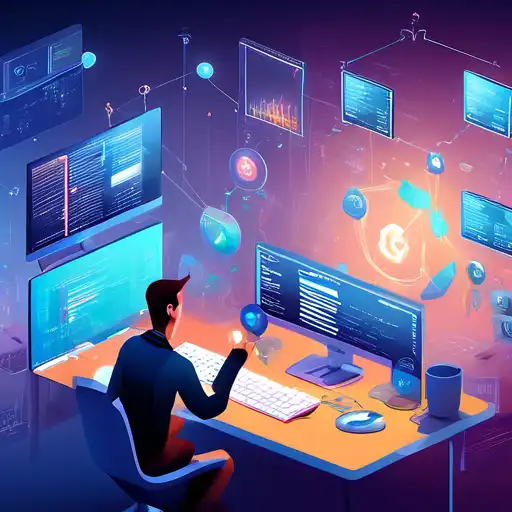Introduction to Software Development Trends
As we navigate through the year, the software development landscape continues to evolve at a rapid pace. Staying ahead of the latest trends is crucial for developers, businesses, and tech enthusiasts alike. This article delves into the most significant software development trends that are set to shape the industry this year.
1. Artificial Intelligence and Machine Learning Integration
Artificial Intelligence (AI) and Machine Learning (ML) are no longer just buzzwords but have become integral to software development. From automating routine tasks to enhancing user experiences, AI and ML are revolutionizing how applications are built and operated. Developers are increasingly incorporating AI-driven features into their projects, making this trend a must-watch.
2. The Rise of Low-Code and No-Code Platforms
Low-code and no-code platforms are democratizing software development, enabling non-technical users to build applications with minimal coding knowledge. This trend is accelerating digital transformation across industries by making app development more accessible and cost-effective.
3. Progressive Web Apps (PWAs) Gain Momentum
Progressive Web Apps (PWAs) offer a blend of web and mobile app experiences, providing users with fast, reliable, and engaging applications. With major companies adopting PWAs, this trend is expected to grow, offering developers a way to reach wider audiences without the complexities of native app development.
4. Blockchain Beyond Cryptocurrency
Blockchain technology is finding its way into various sectors beyond cryptocurrency, including healthcare, finance, and supply chain management. Its ability to ensure security, transparency, and decentralization makes it a key trend in software development this year.
5. The Adoption of DevOps and GitOps Practices
DevOps and GitOps practices are becoming standard in the software development lifecycle, emphasizing automation, continuous integration, and continuous delivery (CI/CD). These methodologies are improving collaboration between development and operations teams, leading to faster and more reliable software releases.
6. Focus on Cybersecurity
With the increasing number of cyber threats, cybersecurity has become a top priority in software development. Developers are now integrating security measures from the initial stages of development, adopting a 'security by design' approach to protect applications and user data.
7. The Growth of Edge Computing
Edge computing is gaining traction as it allows data processing closer to the source, reducing latency and bandwidth use. This trend is particularly relevant for IoT applications and services requiring real-time processing, making it a significant area of focus for developers.
8. Sustainable Software Development
Sustainability is becoming a key consideration in software development, with developers seeking ways to reduce the environmental impact of their applications. From optimizing code to choosing energy-efficient hosting solutions, the industry is moving towards greener practices.
Conclusion
The software development industry is witnessing transformative trends that are redefining how applications are created and consumed. By staying informed and adapting to these trends, developers and businesses can ensure they remain competitive in this dynamic landscape. Whether it's leveraging AI and ML, embracing low-code platforms, or prioritizing cybersecurity, the opportunities for innovation are endless.
